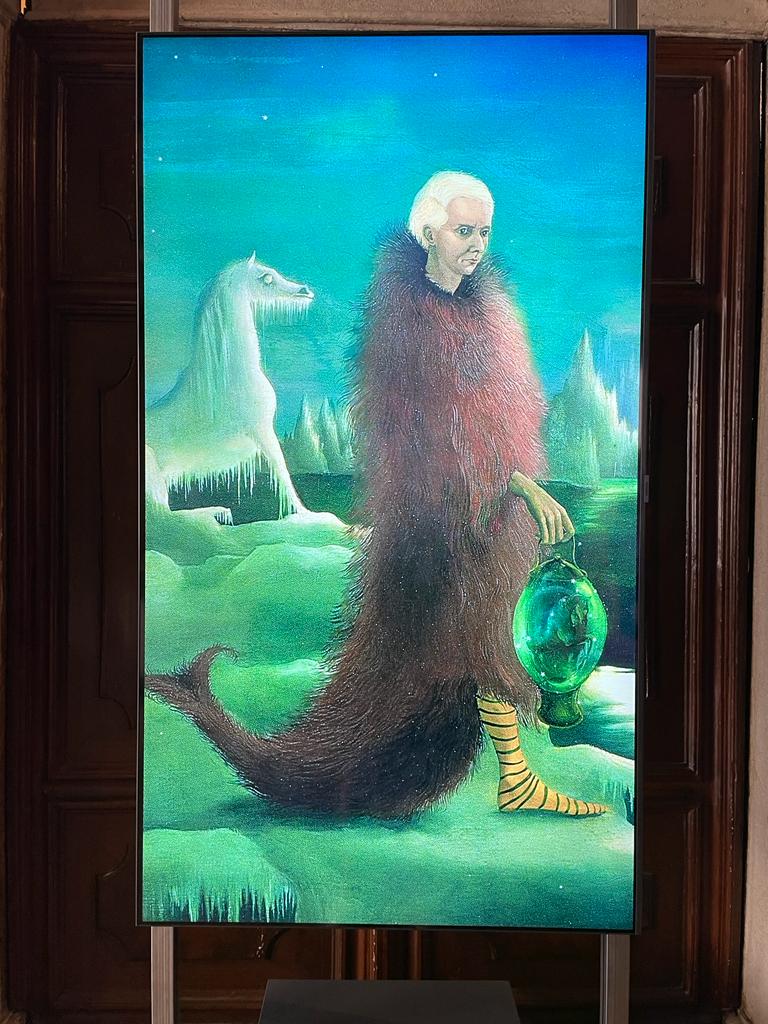
The 59th International Art Venice Biennale, curated by Cecilia Alemani, its satellite pavilions and shows mark a strong emphasis on the advancements of digital art as a rightful art world medium. This article explores the different digital art focused exhibitions displayed at the Venice Biennale Arsenale & Giardini, and satellite events.
The 2022 Venice Biennale titled The Milk of Dreams takes its name from a book by Surrealist artist Leonora Carrington in which she describes a magical surreal world where life and living beings are reinvisioned through imagination. In her book, Carrington takes the reader on an imaginary journey that redefines humans and their bodies. In parallel to the Biennale, the Peggy Guggenheim Collection currently exhibits a show titled Surrealism and Magic: Enchanted Modernity, which displays sixty artworks that offer an overview of the entire development of the Surrealist movement, including works by Leonora Carrington.
The history of the Venice Biennale dates back to 1895 as an international cultural exhibition. It is only since the mid 1970’s that the Venice Biennale’s board and members appoints an artistic director, among a professionalized field of curators, who oversees the exhibition and initiates an overarching theme for the edition. Historically, visitors were more accustomed to seeing and experiencing more traditional art forms and mediums at the Venice Biennale such as painting, sculpture and drawing. Since several years it has become more common to experience digital-born artworks at the Venice Biennale, specifically video and sound installations. However this year marked a great leap for the new media arts, artists and practices as the 59th Venice Biennale can be seen as a celebration of the digital, setting the placement of the digital arts side by side with traditional respected mediums. This article explores the different new media works and exhibitions displayed at the Arsenale & Giardini, and will then take the reader on a journey through this year’s Biennale satellite exhibitions.
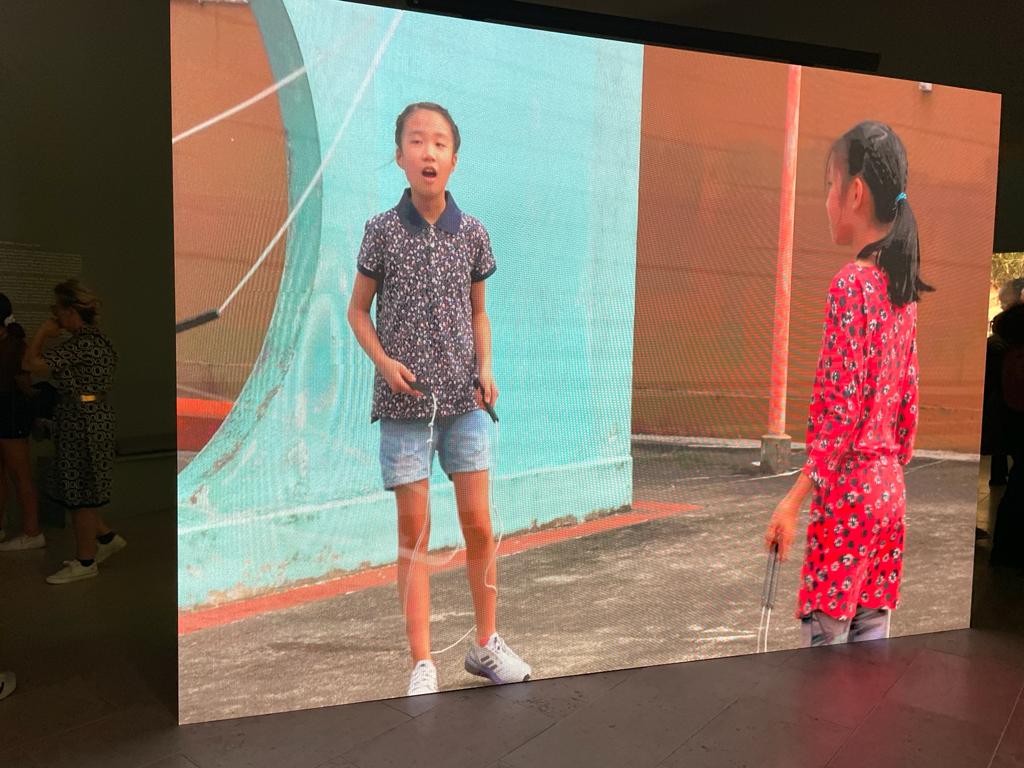
The Belgian Pavilion exhibits Francis Alÿs’ The Nature of the Game. A video art installation curated by Hilde Teerlinck. The Nature of the Game presents a selection of films from the artist’s Children’s Games series which started in 1999 and is an ongoing project. Included in the selection are video works filmed between 2017-2022 ranging in location from Hong Kong, the Democratic Republic of Congo, Belgium, Mexico, and other countries. The installation of the different screens and films bring attention to the complex realities of children around the world, and the interaction of children with their surrounding environments.
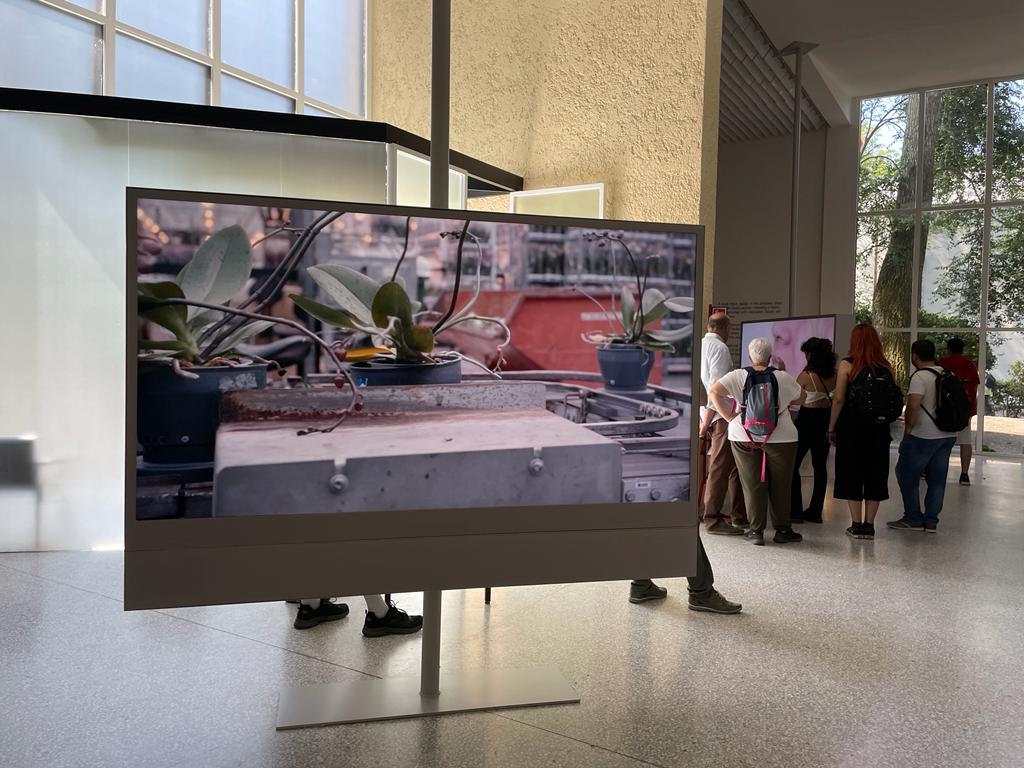
The Estonian Pavilion exhibited inside the Dutch Rietveld Pavilion presents artworks by Kristina Norman and Bita Ravazi in collaboration with curator Corina L. Apostol in which the artists developed a multi-layered installation including two video works. The pavilion takes as its focal point the life and work of Emilie Rosalie Saal who made her mark internationally as a colonial botanical artist and traveler. Between 1899-1920 the artist and her husband writer and photographer, Andres Saal, lived in Java, Indonesia, then colonized by the Dutch. The exhibition brings attention to the abuse of power exercised by the colonizers and with that the erasing of the perspective and knowledge of the indigenous.
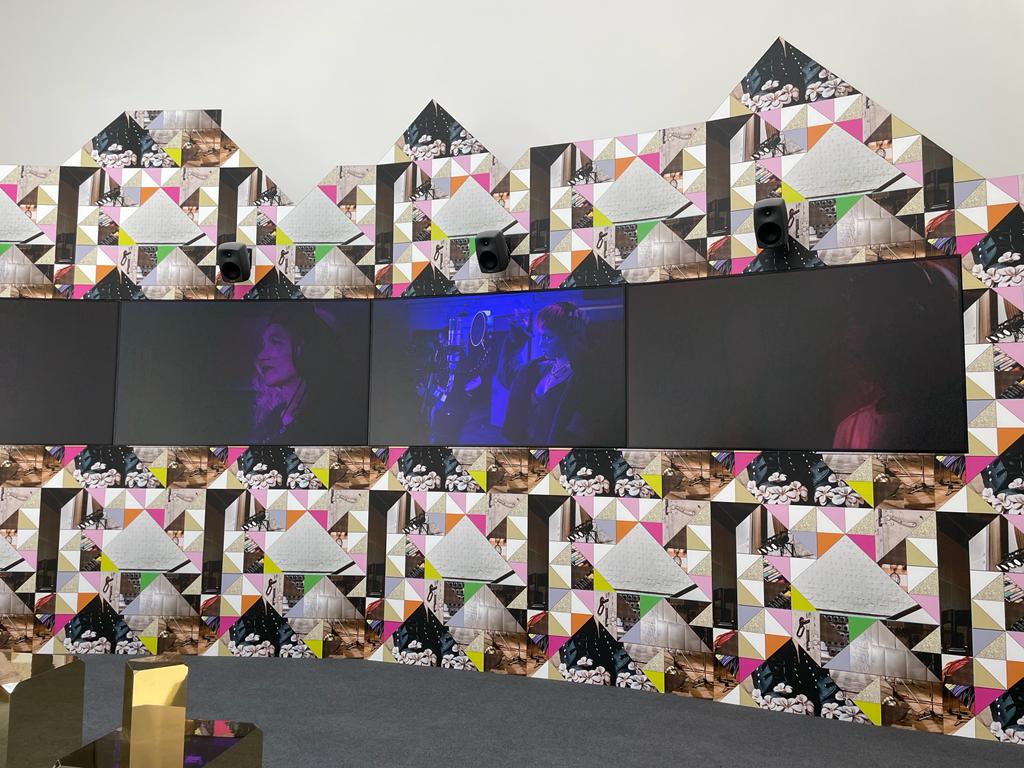
The British Pavilion presents a show composed of video works as installation by artist Sonia Boyce. The exhibition titled Feeling Her Way exposes the artist’s interest in the potential of collaborative play as a route to innovation. The main work at the exhibition is also the first which the viewer experiences upon walking into the British Pavilion that exhibits a work displayed on three large LED screens of Black British female vocalists embodying feelings of freedom, power, and vulnerability.
The Canadian Pavilion curated by Reid Shier is a two-part show by artist Stan Douglas. The exhibition displayed at the Canadian Pavilion is titled 2011 ≠ 1848 and displays four large-scale photographs. In this project, the artist combines and contrasts news footage from London’s 2011 Hackney riots with footage from the global Arab Spring uprisings of the early 2010’s, and images from the Occupy Wall Street protestors on New York’s Brooklyn Bridge. These are then compared and contrasted to historical events from 1848 in which middle and working classes in Europe rose up against a lack of democratic liberty and the hegemony of the elite. In this exhibition, the artist brings attention to how generational differences in the dissemination of information can influence the course of a revolt, and the global frustration with social systems. The second show ISDN displayed at the Magazzini del Sale No. 5 is a two-channel video installation that explores music as a cross-continental cultural resistance. It focuses on two musical genres: Grime music, originating in London, and Mahraganat music which originated in Cairo. In doing so, the artist represents and transmits feelings of international interconnectedness.
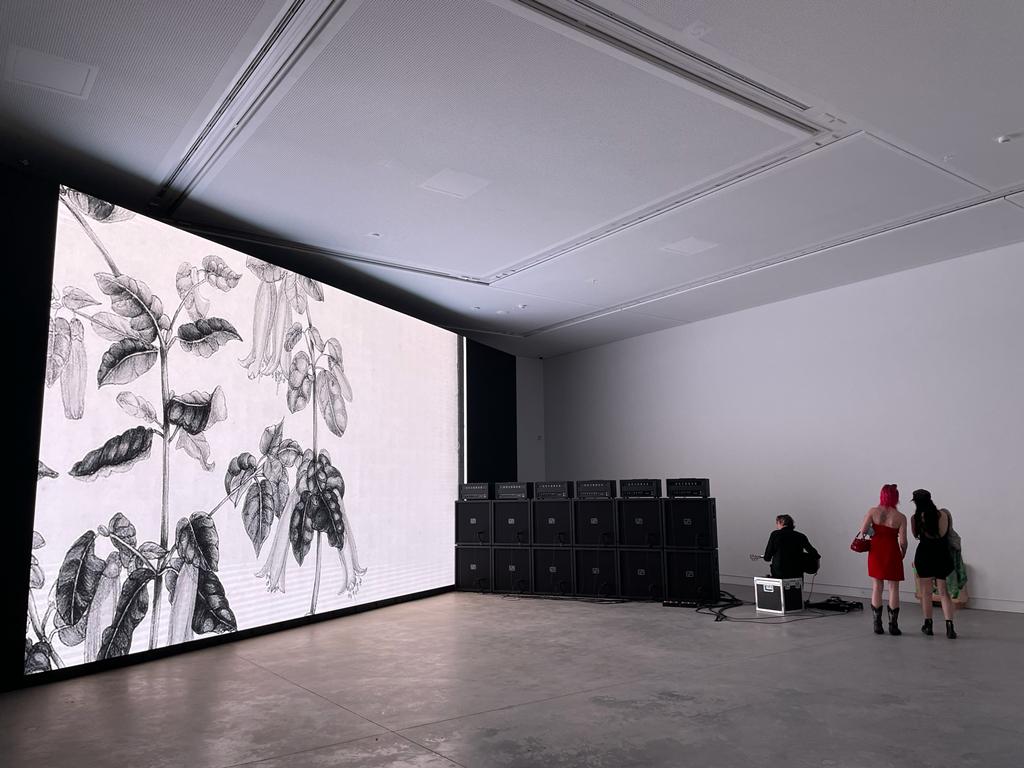
The Australian Pavilion exhibits DESASTRES, an experimental noise project which combines a video installation with a sound work performed live with an electric guitar by Marco Fusinato. The images displayed on a large LED wall are sourced via a stream of words that have been put into an open search across multiple online platforms and exhibit disparate and disconnected randomly generated images.
The Cameroon Pavilion compares four Cameroonian artists with international artists and pays special attention to technology exploring the emerging world of NFTs. The exhibition titled The Time of Chimeras displays an assemblage of paintings, sculpture, video works, and for the first time ever at the Venice Biennale art NFTs.
The Egypt Pavilion Eden-like Garden presents works by Mohamed Shoukry, Weaam El Masry, and Ahmed El Shaer. The exhibition displays an immersive experience of sculpture, installation and video works that rapture the human being and in doing so bring attention to the redefining of humanity.
As the Netherlands lent its pavilion to Estonia this year at the Giardini, the Dutch instead used the Chiesetta della Misericrodia to display Melanie Bonajo’s video installation work titled When the Body says Yes. The installation, commissioned by the Mondriaan Fund, is part of the artist’s ongoing research into the current status of intimacy in our increasingly alienating society.
Artist Monica Heller’s artworks for the Argentine Pavilion comprise of fifteen 3D animation works. Curated by Alejo Ponce de León, the exhibition explores the limits of the body, imagination, and cognitivity through the representation of anthropomorphic characters and objects taken from different stories and fables. Heller’s characters assume adult roles in complex relationships that connect the viewer to familiar representations.
Nan Goldin’s Sirens, 2019-2020 displayed at the Giardini appropriates film footage from thirty films to associate the beauty of the female body with the sensuality and ecstasy of a drug high. The work was conceived as an homage to Donyale Luna, the first Black supermodel who died from a heroin overdose in 1979. The video includes footage from Andy Warhol’s “Screen Tests” of Luna.
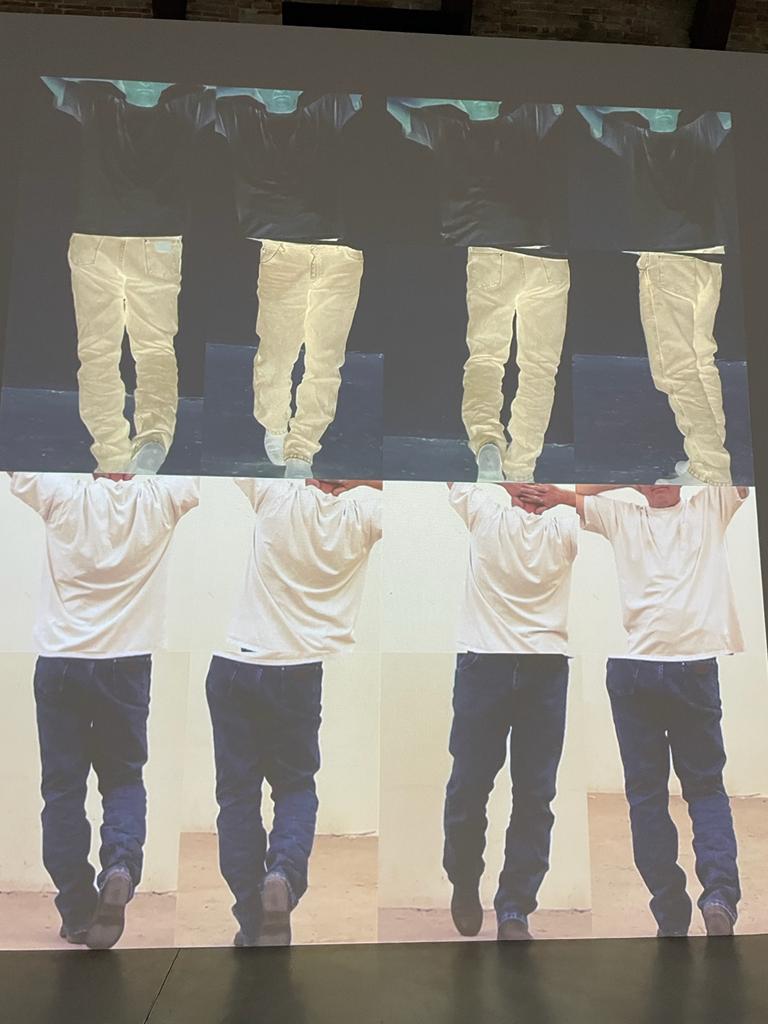
The Pinault Collection at the Punta della Dogana exhibits a solo show titled Bruce Nauman: Contrapposto Studies. The exhibition takes as its starting point a corpus of recent video installations from the Contrapposto series, curated by Carlos Basualdo and Caroline Bourgeois, which is contextualized through a selection of older works by the artist. ‘The show focuses on three fundamental aspects of Nauman’s oeuvre which are essential components of this series: the artist studio as a space where creation takes place, the use of the body in performance and the exploration of sound’. Contrapposto is an Italian term used in the visual arts to describe a human figure standing with most of its weight on one foot so that its shoulders and arms twist off-axis from the hips downwards in the axial plane. This sculptural scheme which originates from the ancient Greeks later became a major feature of Renaissance art. Nauman’s works which exhibit the artist practicing the contrapposto pose on his own body instill in the viewer an unsettling feeling which further destabilizes notions of the body, identity, and language. Nauman has stated that he wants his art “to be vehement and aggressive because it forces people to pay attention”. For Nauman creating art in his studio “became more of an activity and less of a product”. The works in this exhibition display the pioneering video artists’ interest in portraying films of the human body in live performance and manipulating pre-existing footage. Bruce Nauman began to explore the potential of video art in the 1960’s as part of his ongoing investigation of the possibilities of what art may be. By displaying himself in contrapposto poses and scenes the artist in a sense enlivens the static ancient notions of sculpture, now portrayed in a t-shirt and jeans. In these works there is also a clear allusion to age and how time unsettles the body.
The last rooms in the exhibition display Nauman’s studies with 3D developments which enabled him to further advance his interest in researching the human body, the studio, and the exploration of the sense of vision and visuality. Nauman’s work Nature Morte, 2020 comprises three 4K video projections each linked wirelessly to an iPad which the viewer can manipulate to virtually move around his studio and to discover its contents of artworks, notes, sketches, furniture, and other tools and objects.
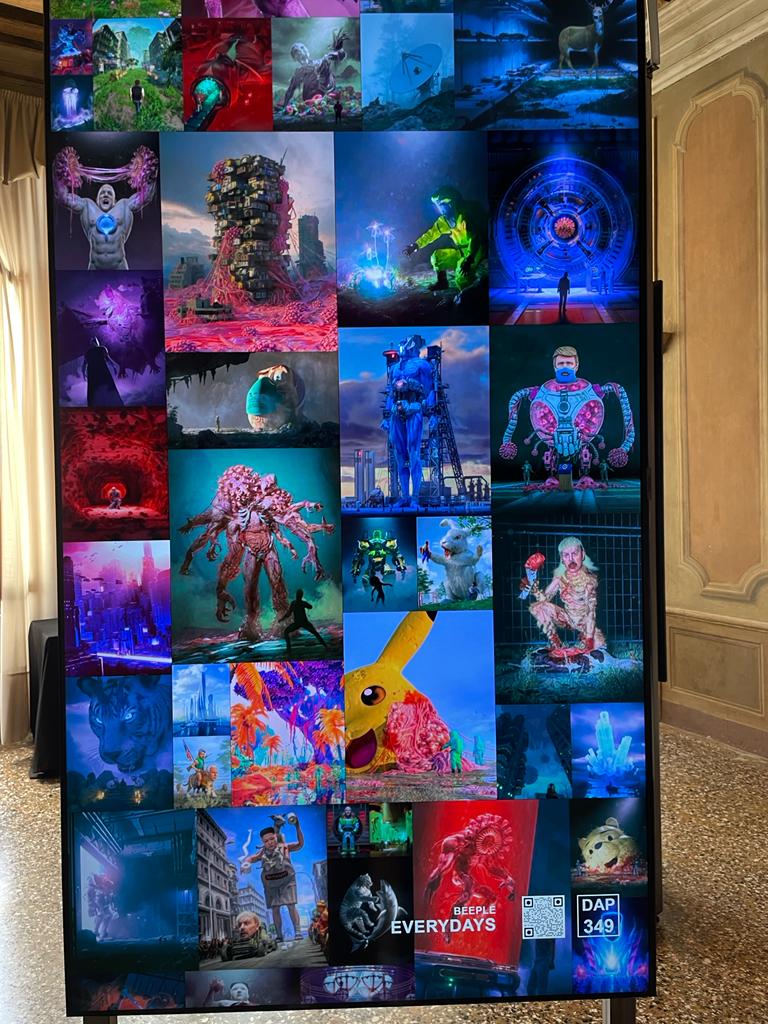
The Decentral Art Pavilion at Palazzo Giustinian Lolin, curated and organized by Florencia S.M. Bruck, Javier Krasuk, Diego Lijtmaer and Simone Furian. The exhibition titled Singularity brings together over 200 NFT artworks from a diverse group of international artists, including Beeple, Kevin McCoy, Trevor Jones, XCOPY, and Ran Slavin, all who are ‘shaping the creative economy and NFT space’. Singularity dives into decentralized art with the aim to ‘educate, engage and enthrall the aficionado, the collector, and the public at large; in such a fast-evolving creative dominion’. Moreover, the exhibition is aimed to foster a dialogue around NFTs and their impact on the art world.
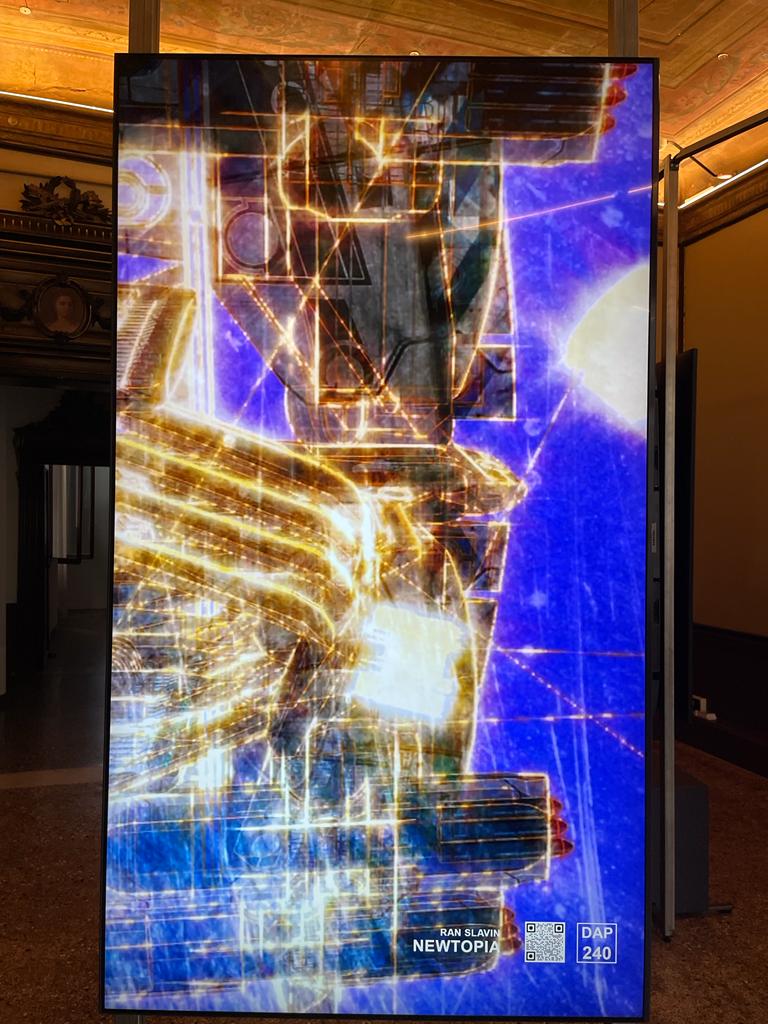
The Decentral Art Pavilion exhibits a show that goes in line with the Biennale exhibitions with its outlook on the Grand Canal hosted in an exquisite Baroque style palace. Running in parallel with the Venice Biennale for the first 8 weeks. Highlights from the exhibition include Beeple’s Everydays: the First 5000 Days, Ran Slavin Newtopia, David Rodriguez Gimeno DEVELOP / MOV N1, and Trevor Jones’ ETHGIRL. Visitors to the Decentral Art Pavilion can even experience an NFT rendering of Leonora Carrington’s famous portrait of Max Ernst reinvented as an NFT by Scotch Tape in collaboration with DAP DAO.
As an icing on the cake, the Dior boutique in Venice is currently showcasing one of the first NFT handbags in its storefront near the Piazza San Marco.
